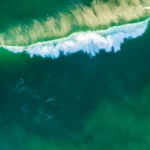This observation takes scientists a step closer to understanding the strangeness of our world, and also has the potential to “warm-up” quantum computing, making it much cheaper and more accessible
We’re all familiar with the most common forms of natural matter — liquid, gas, solid, and even plasma. Time crystals, on the other hand, are a newly discovered type of matter. This strange matter was first theorized by Nobel Laureate and MIT professor, Frank Wilczek in 2012 and confirmed just four years ago.
Samuli Autti, a research associate at Lancaster University and first author of the new time crystal study, says that time crystals are basically a collection of particles in constant motion without an external force.
“Conceptually a time crystal is a very simple thing: It is a substance where the constituent particles are in constant, systematically repeating motion even in the absence of any external encouragement,” Autti explains. “This is very unusual in nature.”
He also admits the phrase ‘time crystal’ “sounds like someone adopted the name from a 1980’s TV science fiction show instead.”
In order to create these time crystals, the team first cooled down (to just above absolute zero at nearly -460 degrees Fahrenheit) a mostly vacuum-filled test tube with a rare helium isotope. Two copper coils were then placed around the tube and given a “kick” (aka, a radio-frequency pulse was passed through them) to generate two clouds of constantly rotating magnetic particles. These aren’t something you can see with the naked eye per se, but Autti explains that these clouds create a signal that can be measured to confirm their presence and the number of particles they consist of.
These mysterious clouds are the time crystals.
“Basically, contemporary superconducting candidates for the components of a quantum computer are based on a Josephson junction between two superconducting metals,” Autti explains. “Essentially this is the same thing as the interaction we observed between the two time crystals.”
In addition to the time crystals’ demonstration of this quantum effect, Autti says that time crystals are good at intrinsically protecting their own coherence. This means they’re not easily thrown off by outside stimuli — a necessary trait for sensitive quantum computers.
Still, Autti says there’s plenty of work to do before that reality comes to fruition:
“As for the timeline of applications, many steps towards a more-approachable practical realization are needed before one should expect applications.”







